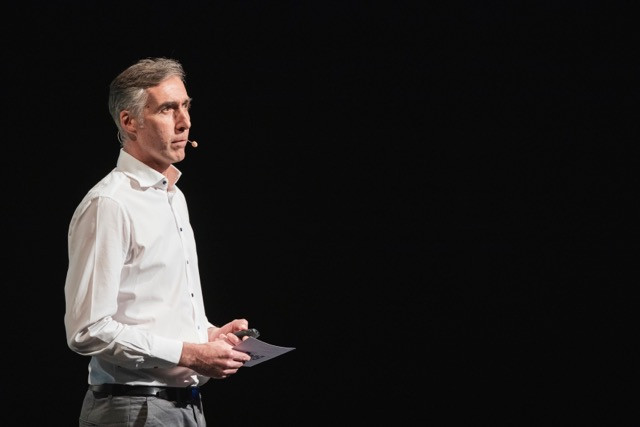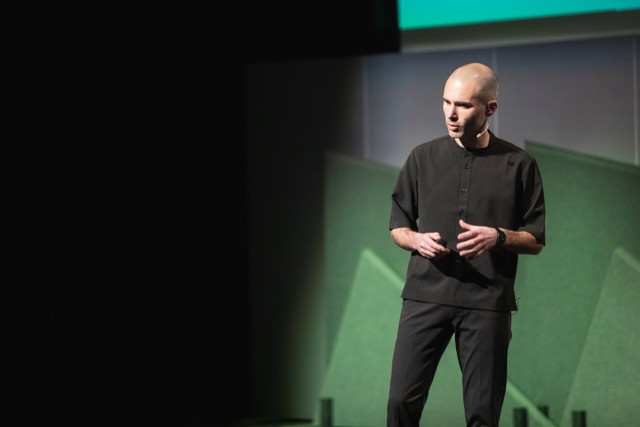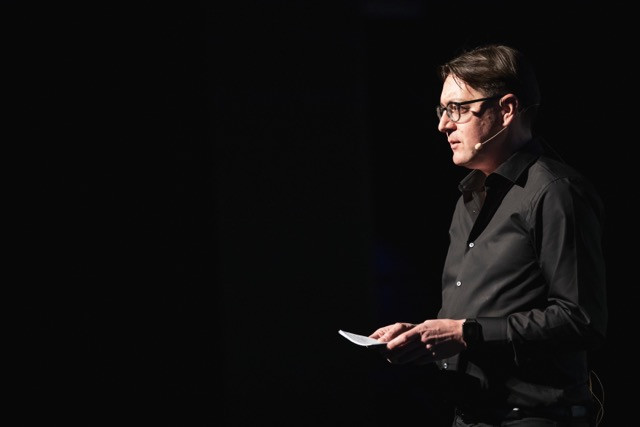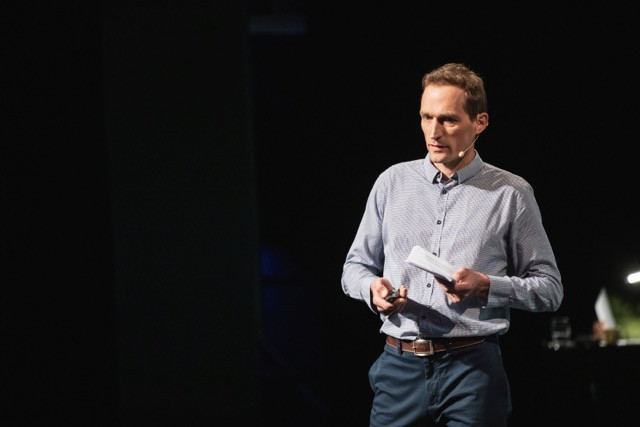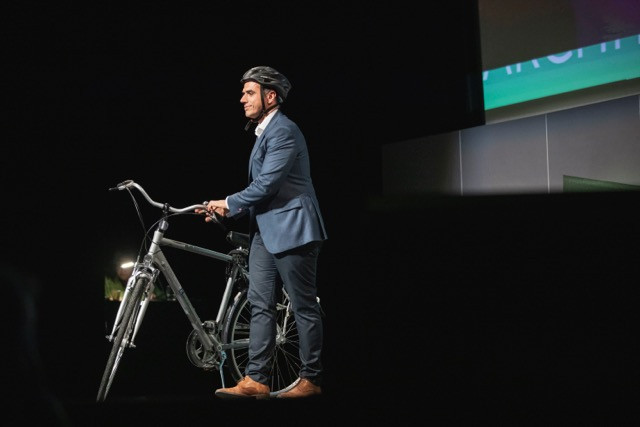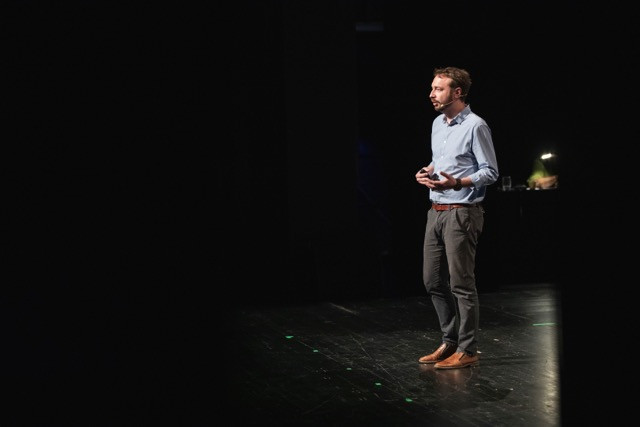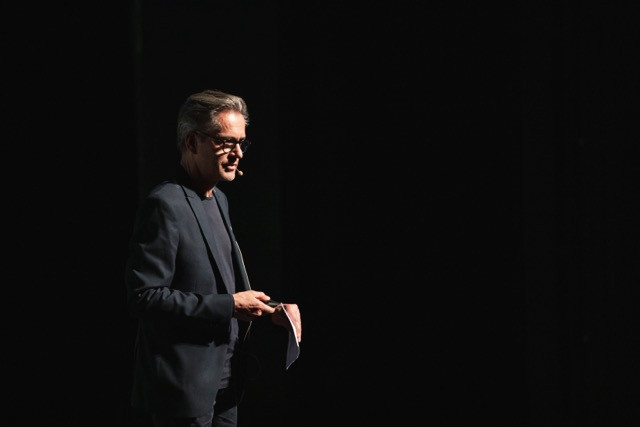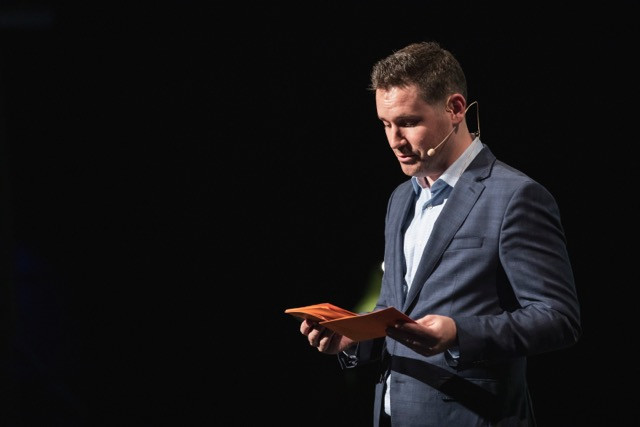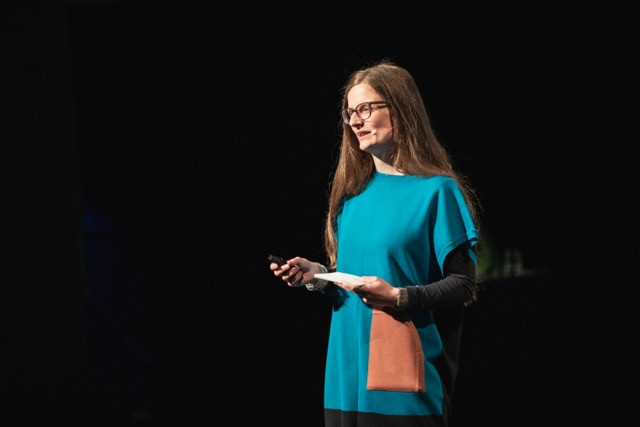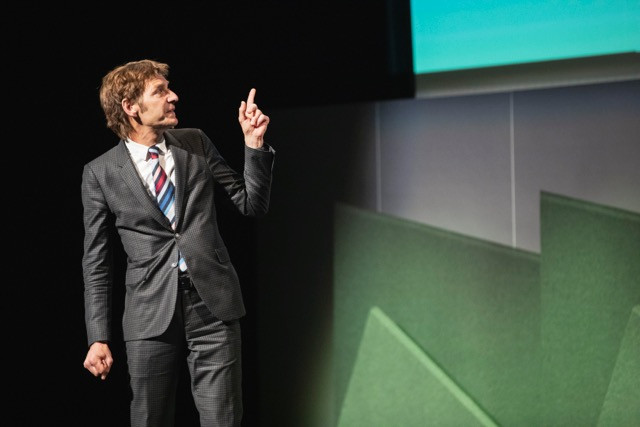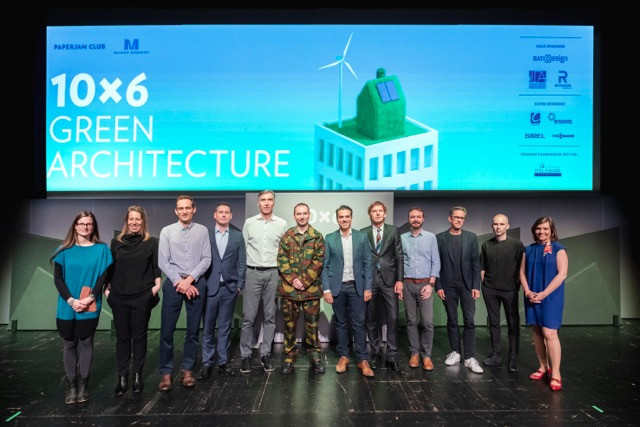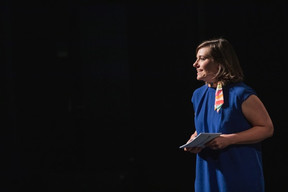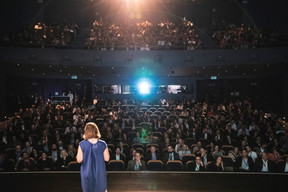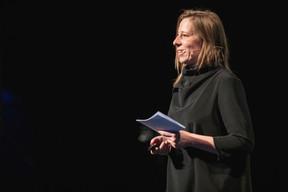The monthly event organised by Paperjam Club offers ten speakers the opportunity to speak on a topic for just six minutes. Tuesday’s edition, hosted at the Théâtre d’Esch, was organised with the architectural publication Archiduc, the editor of which, Céline Coubray, moderated the speakers.
Among the most unusual presentations was that of Julien Bertucci, head of sustainable development at the Société Nationale des Habitations à Bon Marché (affordable housing agency). An offstage voice explained that the last survivor in a post-apocalyptic future, incidentally the great grandson of Bertucci, had travelled back in time to prevent the environmental crimes of construction that bring the planet’s downfall. His dramatic presentation focused on air quality inside buildings, which is often polluted through poor decoration choices, lack of ventilation and overuse of products such as bleach.
Annick Meiers described the work that will begin this summer on Luxembourg’s Äerdschëff, modelled on the passive solar earth shelters pioneered by architect Michael Reynolds. The educational building will be constructed of rammed earth tyres, recycled glass bottles and mycelium, a funghi used in insulation. She called out for interested volunteers to get involved in the construction this summer at the site in Redange.
Other speakers shared stories of unusual projects they had worked on. Anabel Witry, of Witry & Witry, described the eco-quartier of Kiem 2020 her firm is working on. The site comprises four buildings with 156 eco-affordable homes. She reminded the audience that green construction was not just about passive living, it also required attention to where the energy for the construction itself comes from.
Guillaume Dubois of Schroeder et associés described candidly the challenges of re-using the 150 tonnes of glass from the Jean Monnet building, which his firm is razing. He explained that the process is time-consuming and must be adapted for different types of buildings. “We have to be ready to invest time to create markets for re-evaluating and reusing,” these types of materials, he said.

